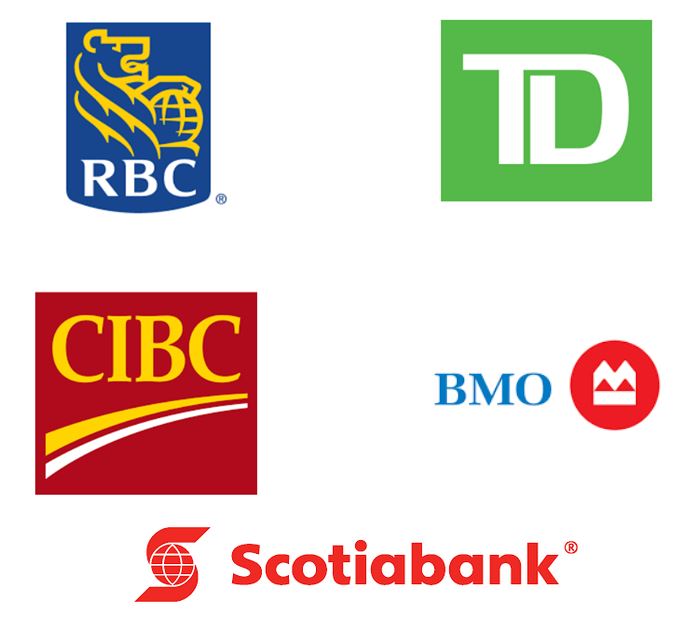The Big 5 Canadian banks have recently released their Q3 results. In this article I compare the 5, 10, 15, and 20 year returns for all 5 and provide my opinion on the order of preference in which I would acquire shares.
Summary
- A comparison of the 5, 10, 15, and 20 year returns for the Big 5 Canadian banks shows a clear winner.
- The banks which have had significant US exposure for several years have fared much better than those which do not or which have only recently entered the US market.
- Despite the various headwinds/uncertainties which make me reluctant to acquire further shares in the Big 5, my Canadian bank holdings are a core component of my investment portfolio.
- All are exceptionally well managed banks and are far more conservative than their much larger US peers.
Introduction
While the largest 6 Canadian banks have collectively reported record Q3 earnings of ~$11.7B, Canada’s S&P/TSX Commercial Banks Index has only gained ~12.5% in the past 12 months versus the ~24% increase in the U.S. KBW Bank Index. This lagging performance comes about even though they are beating big U.S. lenders on profitability, productivity and dividend yields. Much of this underperformance has to do with a more robust US economy and investors being optimistic that the US banks are in a more favorable position given that the millennial generation is approaching their home buying years.
The lower tax rates are also definitely fuelling significant annual profit gains at Wall Street’s biggest banks; the Canadian banks with US operations are benefiting from U.S. tax cuts signed into law in December 2017.
Furthermore, the U.S. economy is expected to expand 2.9% in 2018 and 2.5% in 2019 while economic forecasts for Canada call for 2% expansion in 2018 and 1.9% in 2019.
The uncertainty surrounding the renegotiation of the North American Free Trade Agreement (NAFTA), lingering fears about Canada’s housing market and over-indebted consumers are likely also having a negative impact on Canadian bank stock prices.
The rapid growth of mortgages and loans at the major Canadian banks that have fuelled overheated housing markets and contributed to near record levels of household debt are undoubtedly making many US investors a little apprehensive about investing in Canadian banks. Afterall, it was only a decade ago during the U.S. subprime debacle and Financial Crisis that many US banks required a bailout in order to remain solvent.
While Canadian banks are outperforming their US counterparts on measures such as return on equity and profit margins, they are more expensive than US banks; they have fetched a premium over their US counterparts for ~12 years. In fact, the Canadian banks index is trading at ~2.4 times tangible book value per share versus 2.0 times for the KBW Index of U.S. lenders.
Despite the above, I still view the Canadian banks as a solid long-term investment. In fact, shares in The Bank of Montreal (TSX: BMO), The Bank of Nova Scotia (TSX: BNS), The Canadian Imperial Bank of Commerce (TSX: CM), The Royal Bank of Canada (TSX: RY), and The Toronto-Dominion Bank (TSX: TD) are a core component of my family’s overall investment portfolio.
I am an investor with a long-term outlook so when I compare the long-term performance of the Canadian banks versus the US banks, I am of the opinion that Canadian bank executives are more focused on running their bank than the majority of their US counterparts who might be more focused on their bank’s stock performance.
Having said all this, I thought I would take a look at the Big 5 Canadian banks and to rank them from most to least attractive. I am purposely excluding National Bank of Canada (TSX: NA) in this analysis since I am of the opinion adequate exposure to the Canadian financial sector can be achieved through investments in the Big 5.
I also have absolutely no desire to invest in Laurentian Bank (TSX: LB) despite a dividend yield approaching 6%. This bank is extremely small (sub $2B market cap) and the fact it is the only North American bank with a labour union does not sit well with me. Quite frankly, LB was never a competitor I ever worried about during my entire banking career.
Please click here to read the complete version of this article.
Members of the FFJ community can access reports I generate on high quality companies which add long-term shareholder value. In an effort to help you determine whether my offering is of any value to you I am pleased to offer 30 days' free access to all sections of my site. No commitments. No obligations. That's 30 days from the time you register at absolutely no cost to you!


